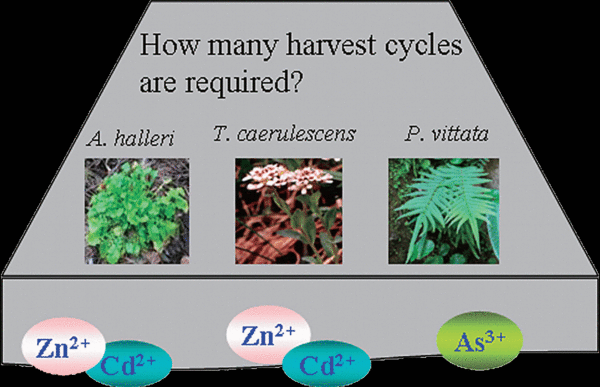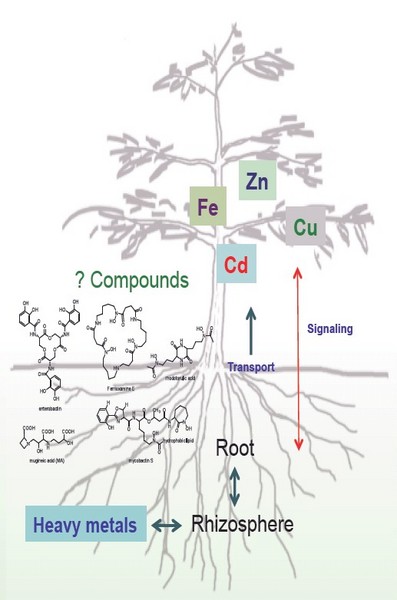Research Focus
Heavy metal homeostasis in plants
Among mineral elements, heavy metals like Cd, Pb, As and Hg are non-essential metals that could be toxic to plants. On the other hand, heavy metals such as Cu, Zn, Mn and Fe are essential micronutrients serving as key cofactors in numerous biological and physiological processes regulating plant growth and development. However, excess amount of essential metals can exert toxicity to plant cells. Plants have developed sophisticated mechanisms to maintain the most beneficial balance of heavy metals in cells. The correct interpretations of source and sink signals allow plants to achieve optimal metal homeostasis by a precise coordination of the metal uptake, transport, chelation and sequestration. My laboratory is primarily interested in the molecular mechanisms underlying heavy metal homeostasis, including sensing, signaling, accumulation and tolerance in plants.

Fe is considered the third most limiting nutrient for plant growth and development because of its low availability in neutral and aerobic environments, which constitute approximately 30% of world’s cultivated soils. One of the world’s most common and widespread nutritional disorders is Fe-deficiency anemia that affects more than 30% of the world’s population. One the other hand, industry, agriculture, extensive mining, military operations and other human activities have led to the accelerated release of metals to toxic levels into the ecosystem. These toxic metals impose serious environmental problems and pose health risks to living organisms. To maintain sustainable agriculture, it is essential to understand how plants respond to and cope with these toxic metals in their habitat. We have therefore established experimental platforms integrating biochemical, genetic and genomic approaches to dissect different aspects of heavy metal homeostasis in plants. We believe that better understanding of heavy metal homeostasis will benefit the creation of knowledge-aided applications for value-added crops or phytoremediation.

One of our current research focuses on the Fe homeostasis and its contribution to toxic metal tolerance. Our previous study revealed that plants can tolerate toxic metals by modulating the ability to uptake essential metal Fe in a hyperaccumulator Arabidopsis halleri. Our results indicated that Fe status and the Fe-regulated transporter IRT1 together contribute to the hypertolerance of Zn and Cd. Moreover, by genetic screening, we have identified ZIR1 (zinc tolerance induced by iron 1) to be responsible for Fe-mediated Zn tolerance.

Kuo-Chen Yeh
Distinguished Research Fellow and Director
Director (2019.1.16-present)
Interim Director (2016.10.1 -2019.1.15)
Director/Coordinator of Molecular and Biological Agricultural Sciences program of Taiwan International Graduate Program (TIGP-MBAS), Academia Sinica (2015-2020)
Distinguished Research Fellow (2024-present)
Research Fellow (2014-2024)
Associate Research Fellow (2009-2013)
Assistant Research Fellow (2001-2009)
PDF Howard Hughes Medical Institute and Department of Biological Sciences, Stanford University, USA (1999-2001)
Ph.D. Plant Biology Graduate Group, University of California, Davis, USA (1994-1999)

